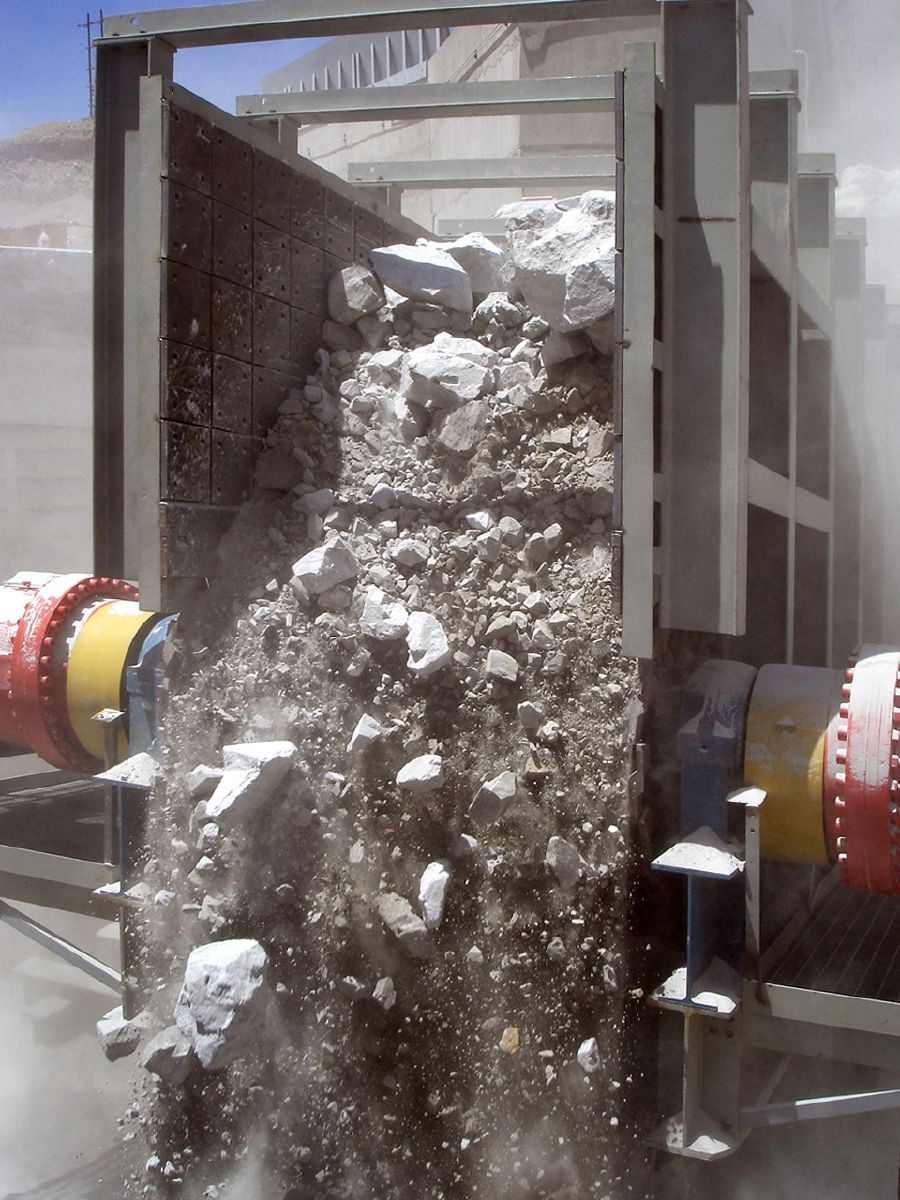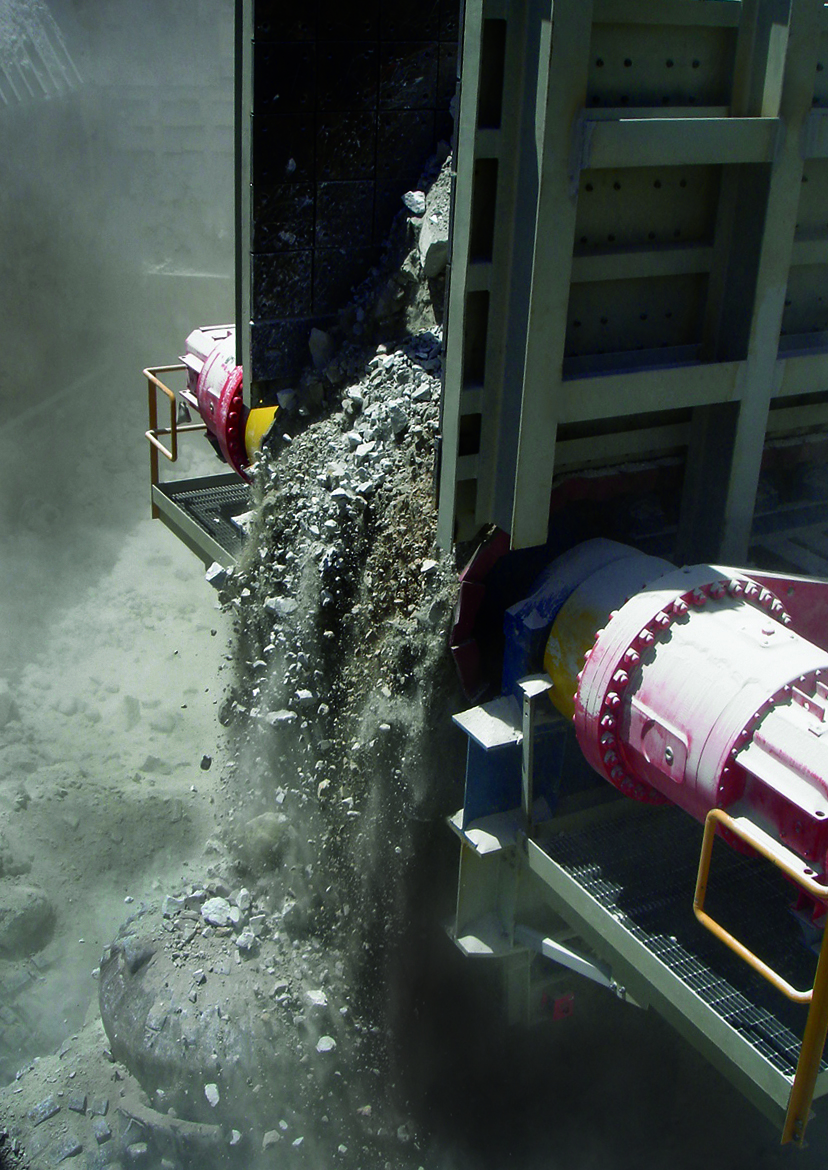What is an apron feeder and when should it be used?
In simple terms, an apron feeder (also known as a pan feeder) is a mechanical type of feeder used in material handing operations to transfer (feed) material to other equipment or extract material (ore/rock) from storage stockpiles, bins or hoppers at a controlled rate of speed.
These feeders can be used in a variety of applications in primary, secondary and tertiary (reclaiming) operations.
Apron feeders are the preferred feeder for several reasons, but there are a few that are commonly seen throughout the industry. Aprons provide better feed control to prevent material feeding in downstream equipment from choking. They have the ability to absorb the shock of loading material directly on the feeder with a shallow bed (the impact coming down on the feeder when the material is dumped is great). Lastly, apron feeders can reclaim a variety of dry or wet materials of various sizes at a uniform rate. This flexibility can be applied in many applications.
Advantages of a tractor chain style apron feeder
A tractor chain style apron feeder refers to the undercarriage chain, rollers and tail wheels that are also used in bulldozers and excavators. This style of feeder dominates the market in industries where users require a feeder that can extract materials of varying characteristics. Polyurethane seals in the chain prevent abrasive materials from entering the internal pin and bushing, which reduces wear and extends equipment life in comparison to a dry chain style. Tractor chain style apron feeders also create less noise pollution for quieter operation. The links of the chain are heat treated, which results in an increased service life.
Overall, the benefits include increased reliability, fewer spare parts, less maintenance and better feed control. In return, these benefits lead to more productivity because of minimal bottlenecks within any mineral processing circuit.
Installing an apron feeder on an incline
The common belief about apron feeders is that they must be installed horizontally. Well, contrary to popular belief they can be installed on an incline! There are many added benefits and capabilities that come from this. Less space is needed overall if installing an apron feeder on an incline. Not just because the feeder can be set on an incline to limit floor space, but also the height of the receiving hopper can be reduced as well. Inclined apron feeders are more forgiving when it comes to larger lumps of material and, overall, will increase volume in the hopper and reduce the cycle time of the haul trucks.
Keep in mind there are some factors to pay attention to when installing a pan feeder on an incline so as to optimize the process. A properly designed hopper, the angle of inclination, the design of the support structure, and the access and stair system around the feeder are all key factors. Make sure you consult all parties and professionals to ensure that all aspects are covered.
Apron feeder optimal speed – Faster is always better, right?
The common misconception for anything is “faster is better”. In the case of apron feeders, nothing could be further from the truth. Optimal speed comes from finding that balance where efficiency meets transportation speed. They do operate at slower speeds than belt feeders, but for a good reason.
Normally, the optimal speed an apron feeder is 0.05 – 0.40 m/second (10–80 fpm). If the ores are non-abrasive, the speed can increase to above 0.30 m/second because there will be less wear.
Higher speeds would hurt an operation. If your speed is too high, you run the risk of accelerated wear of components. Energy efficiency decreases due to the increase in energy demand. Another concern to keep in mind when running an apron feeder at high speeds is the increased possibility of fines being generated. There can be a grinding effect between the material and the pans. Not only would the generation of fines create more issues because of possible fugitive dust in the air, but this also creates a more hazardous work environment for employees overall. So, finding an optimal speed is more important for the productivity and operational safety of the plant.


